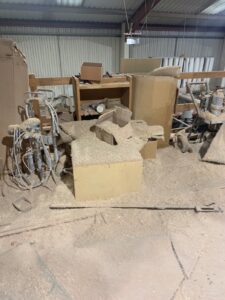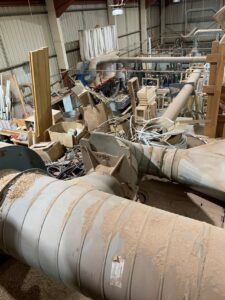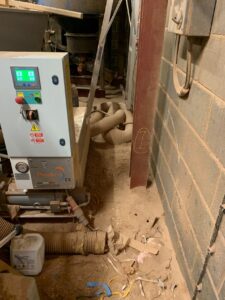An Essex-based company that makes windows and doors has been hit with a £4,000 fine after repeatedly failing to protect its workers from exposure to wood dust.
Timbercraft Windows & Doors Limited, which also manufactures wooden conservatories, was visited by the Health and Safety Executive (HSE) on three occasions over a 12-year period.
Those visits, to the company’s workshop on Severalls Industrial Park in Colchester, identified large build-ups of wood dust around machinery as well as other health and safety breaches. These included workers not being provided with suitable respiratory protective equipment (RPE).

- Breathing in wood dust excessively can cause asthma and nasal cancer. Guidance on working in the woodworking industry is available an inspection-led campaign to protect workers
A subsequent HSE investigation found the company failed to adequately control and prevent its employee’s exposure to wood dust in the following ways:
- inadequate local exhaust ventilation (LEV) and a failure to have its LEV thoroughly examined and tested within the preceding 14 months;
- failure to have employees face fit tested for their RPE;
- common dry sweeping of wood dust;
- using compressed air lines for clearing of wood dust from machines;
- using incorrect L class vacuums; and
- failure to have employees who were exposed to wood dust under health surveillance.

For each of failures above the solutions are widely known in the woodworking industry:
- Health surveillance should be undertaken for employees exposed to wood dust; a system of on-going health checks to detect ill-health effects such as occupational asthma at an early stage.
- LEV in woodworking should be subject to a thorough examination and test by a competent person, no less frequent than every 14 months. It is a detailed and systematic examination sufficient to make sure the LEV can continue to perform as intended by design and will contribute to the adequate control of exposure.
- Adequate LEV will be dependent upon the process, however guidance sheets for control of wood dust at woodworking machines are available for free from the HSE website.
- Face fit testing is required for tight fitting RPE to ensure that it fits the wearers face and does not leak, as this would increase the wearers exposure.
- Wood dust should be cleared on a regular basis using a minimum of an M class vacuum. Dry sweeping and use of compressed air lines should not be used for clearing of wood dust as they create plumes of dust that can then be inhaled once again.
Following the December 2022 inspection, three improvement notices were served relating to control of wood dust. A further improvement notice was served relating to arrangements for monitoring, guarding and other protection devices on machinery.
Each visit by HSE inspectors during the past 12 years had resulted in improvement notices being issued, along with other action taken. However, despite this, the company still failed to act, including to provide its workers with suitable RPE.

Timbercraft Windows & Doors Limited, of Crowborough East Sussex, pleaded guilty to breaching Regulation 9(2), 11(1) and 7(1) of Control of Substances Hazardous to Health Regulations 2002.
The company was fined £4,000 and was ordered to pay £2,792 costs at a hearing at Colchester Magistrates Court on the 16 of January 2025.
HSE inspector Tom McQuade said: “Just seeing the piles of wood dust lying around gave us an indication of how much workers would have been exposed.
“The risks from exposure to wood dust are well known and exposure can cause irreparable harm.
“The fine imposed should highlight to employers in the woodworking industry that the courts and HSE, take failure to control exposure to harmful substances, such as wood dust, extremely seriously.
“Appropriate controls are well documented, and guidance is provided free of charge on the HSE website.
“Businesses need to protect their employee’s respiratory health. And if they don’t, we will not hesitate to take appropriate action.”
This HSE prosecution was brought by enforcement lawyer Arfaq Nabi and paralegal officer Helen Hugo.
Further information:
- The Health and Safety Executive (HSE) is Britain’s national regulator for workplace health and safety. We are dedicated to protecting people and places, and helping everyone lead safer and healthier lives.
- More information about the legislation referred to in this case is available.
- Further details on the latest HSE news releases is available.
- HSE does not pass sentences, set guidelines or collect any fines imposed. Relevant sentencing guidelines must be followed unless the court is satisfied that it would be contrary to the interests of justice to do so. The sentencing guidelines for health and safety offences in England and Wales can be found here and for those in Scotland here.
Follow this news feed: HSE





